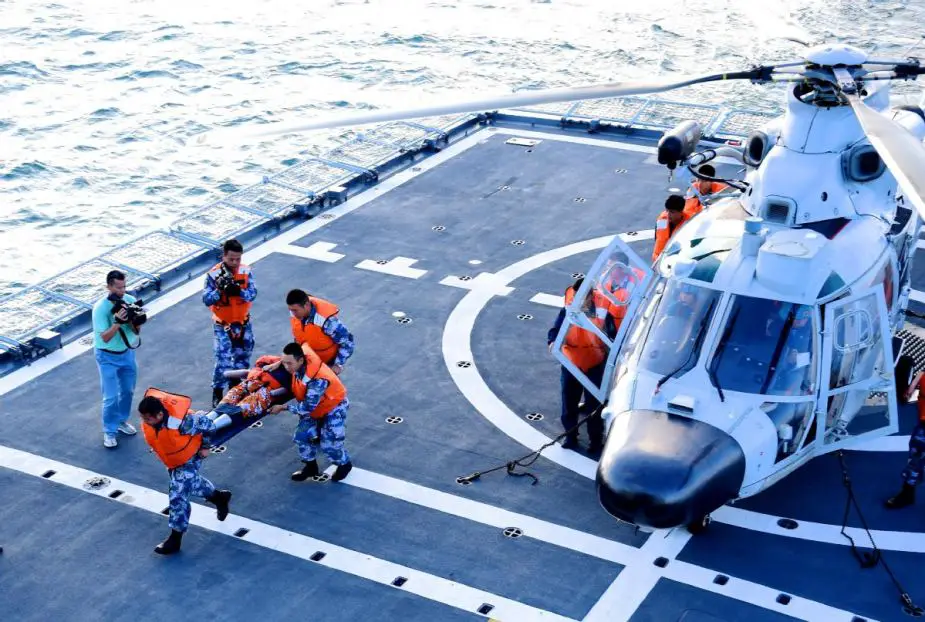Breaking news
Chinese PLA unveils first simulation training system for maritime medical rescue.
People Liberation Army’s first Simulation Training System for Maritime Medical Rescue has been successfully developed recently. The system has been developed by the Sixth Medical Center of the PLA General Hospital with a number of units.
 People's Liberation Army (PLA) Navy sailors carry out a rescue mission during a joint exercise (Picture source: China News Service)
People's Liberation Army (PLA) Navy sailors carry out a rescue mission during a joint exercise (Picture source: China News Service)
Creatively equipped with intelligent advanced simulant and simulation human body kit for sea war injuries, this medical rescue system can truly reproduce maritime medical rescue and traumatic conditions of naval battles, effectively improve the rescue ability of medical personnel and medical rescue training level on the maritime battlefield.
The Simulation Training System for Maritime Medical Rescue is resulted from the PLA’s research projects on the Key Technologies of Maritime Medical Rescue Simulation, mainly used for grassroots medical personnel to carry out maritime medical rescue, emergency treatment skills training and standardized operation assessment, so as to train maritime medical rescue teams specialized in sea war injuries.
Based on the simulation technology, the system constructs four simulation training modules which include theoretical study and assessment of naval injury treatment, training and assessment of medical rescue skills, clinical thinking training and assessment of typical cases of war injuries, and life support operation and evaluation.
According to the head of the scientific research team, the system can support both individual and multi-person joint training and guarantee the simultaneous training of up to six people in an operation group. Among them, the intelligent advanced simulant can simulate such sea war injuries as hypothermia, fire burn and seawater immersion after the wounded fall into the sea; while the simulation human body kit is characterized by clear anatomical structure and ability to simulate multiple organ damage. Multiple trials have verified the performance stability of the system, which has better solved many problems in the surgical operation training and the sea war injury treatment training of medical rescue personnel onboard naval vessels.


























